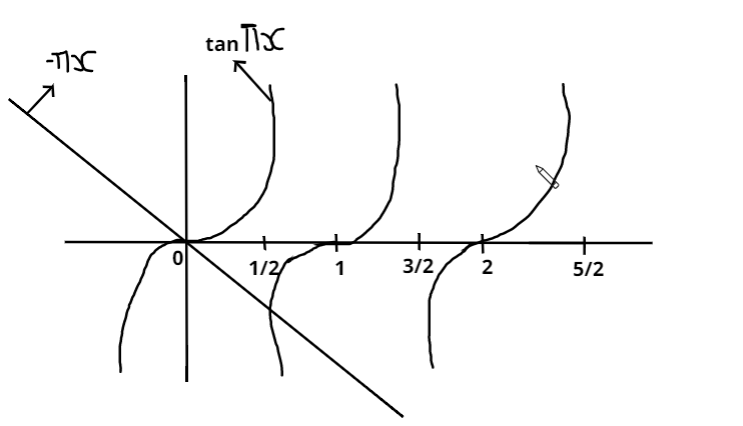Question
Question: Let\(f\left( x \right) = x\sin \pi x,{\text{ }}x > 0\) . Then for all natural numbers \(n,{\text{ }}...
Letf(x)=xsinπx, x>0 . Then for all natural numbers n, f′(x) vanishes at:
(A). A unique point in the interval (n,n+21)
(B). A unique point in the interval (n+21,n+1)
(C). A unique point in the interval(n,n+1)
(D). Two points in the interval (n,n+1)
Solution
Hint- To solve this question first we have to find the differentiation of the given function, then equate this to zero. and we get the required answer.
Complete step-by-step solution -
Now given that,
f(x)=xsinπx, x>0
And we have to find f′(x)
Now to differentiate it we will apply product rule.
According to product rule,
dxd(uv)=udxdv+vdxdu
Now,
dxdf(x)=f′(x)=sin(πx)⋅dxdx+xdxdsin(πx) or f′(x)=sin(πx)+xd(πx)dsin(πx)×dxd(πx) (By chain rule) or f′(x)=sin(πx)+xcos(πx)⋅π or f′(x)=sin(πx)+cosπx(πx)
Now we have to find f′(x) vanishes at, for that we will put the value of f′(x)=0
f′(x)=sin(πx)+cosπx(πx)=0 or - [cos(πx)]πx=sin(πx) or cos(πx)sin(πx)=−πx or tan(πx)=−πx
Now let’s draw the graph of tan(πx)=−πx

Now from the graph it is pretty much clear that −πxline is cutting tanπx for every n+21 but n belongs to natural number, so it would be cutting a unique point between (n+21,n+1) because as we see that it first cuts between 21 to 1 then it again cuts somewhere at 23 and so on. Therefore there is a gap of 1
⇒πx∈(22n+1π,(n+1)π) ⇒x∈(n+21,n+1) and also x∈(n,n+1).
Therefore, the correct option will be (B) and (C).
Note- These types of questions can be solved by using the concept of maxima and minima. In this question we simply find the value of f′(x) and then we observe it in the graph and we get our answer.
